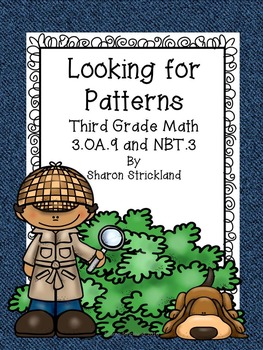Third Grade Common Core Math 3.OA.9 and 3.NBT.3- Add. and Multp. Patterns
- PDF
- Easel Activity
Description
This is a complete 13 day math unit to teach Third Grade Common Core Math Standards 3.OA.9 and 3.NBT.3- Addition and Multiplication Patterns and finding the product of a whole number and a multiple of 10. In this unit, students will learn to complete one and two step patterns in addition and one step patterns in multiplication. Students will also learn to complete missing numbers in an input/output box. Finally, students will learn to use base 10 blocks and number lines to find the product of a whole number and a multiple of 10. This unit contains everything you need to teach this standard. This unit includes:
Lesson Plans for 13 days
A Student Book with classwork
Student Homework
3 Tests
100's Board
Addition Chart
Multiplication Chart
Copy and teach! It's that simple! For more complete math units for Second and Third Grade, visit my Teachers Pay Teachers Store!






